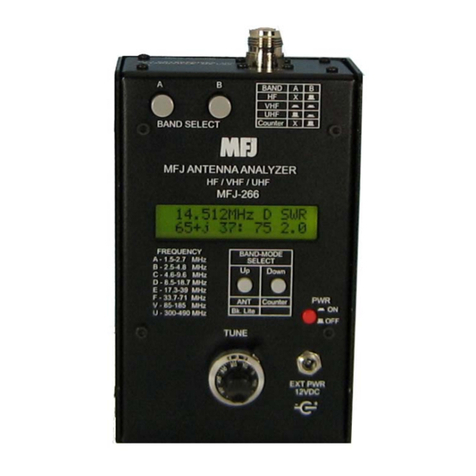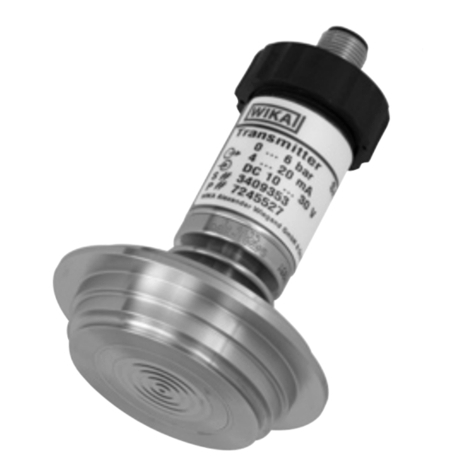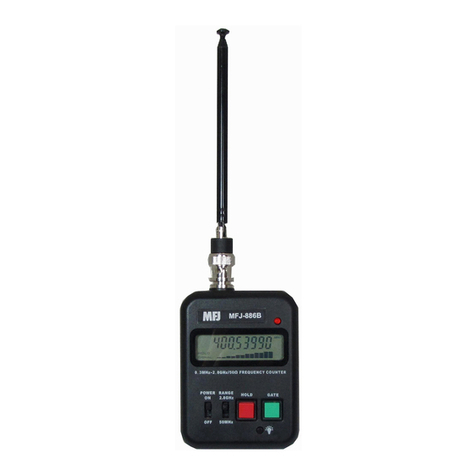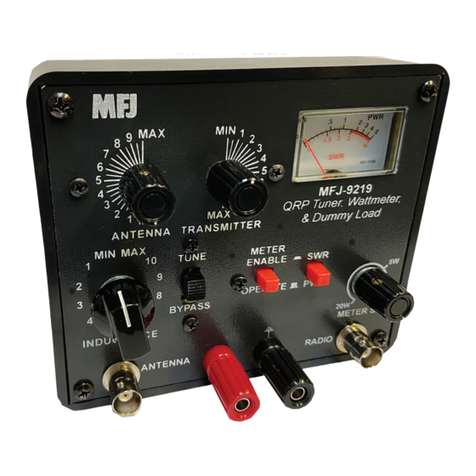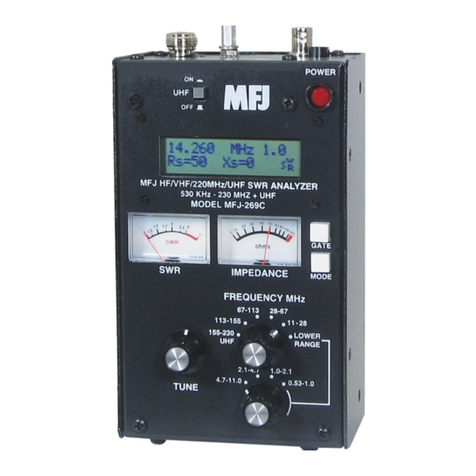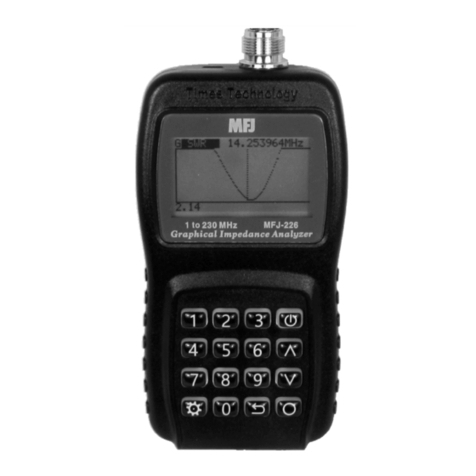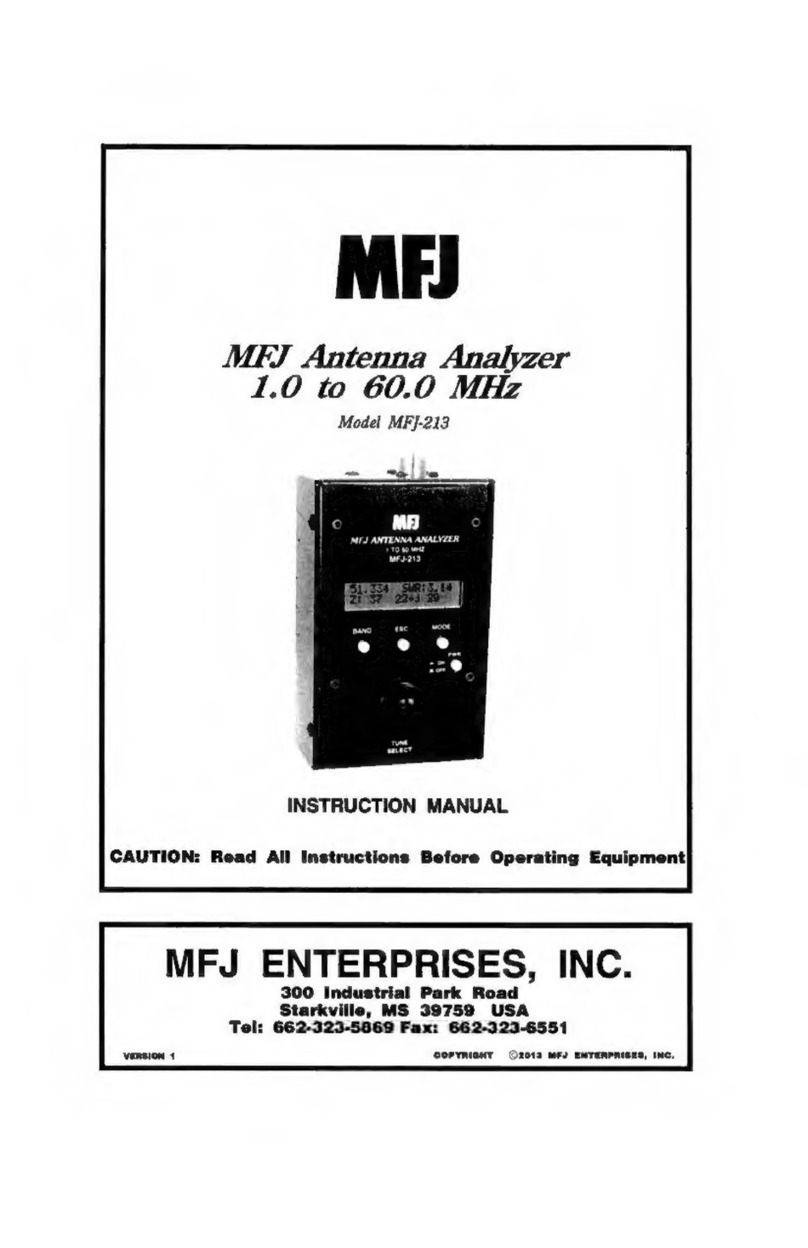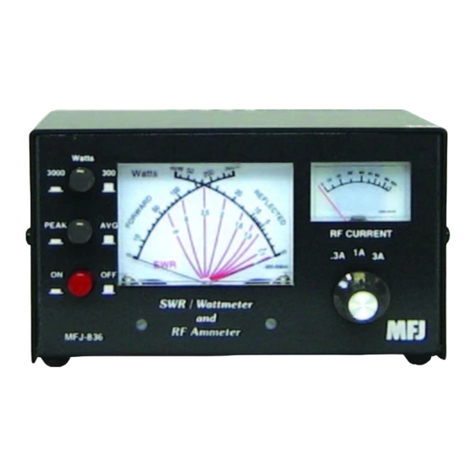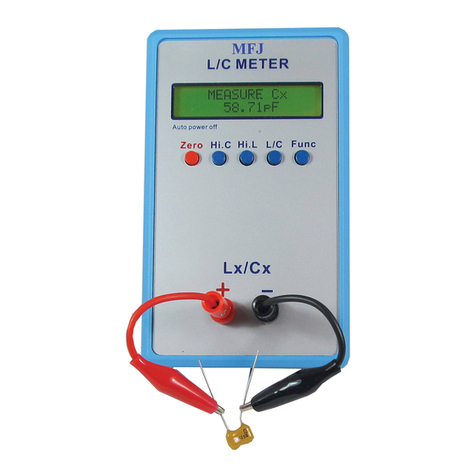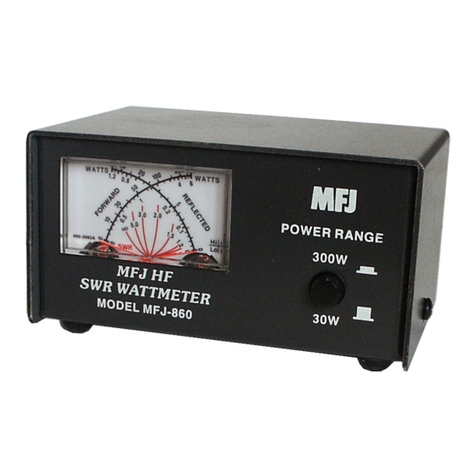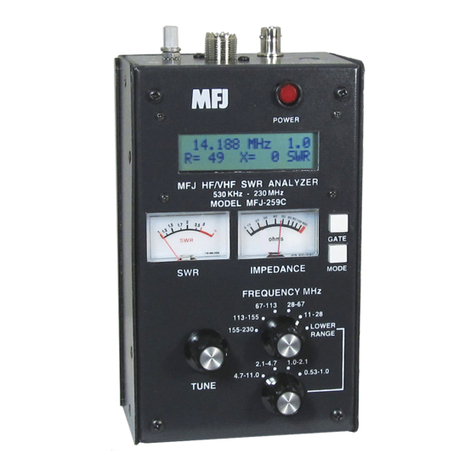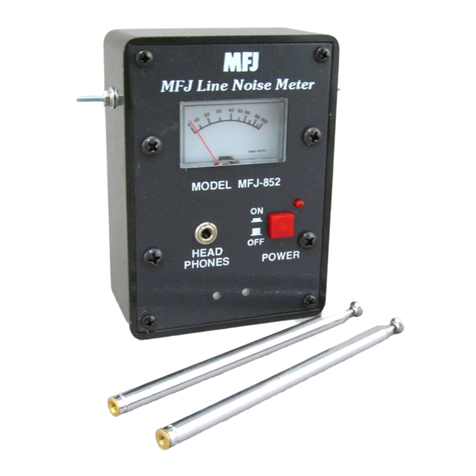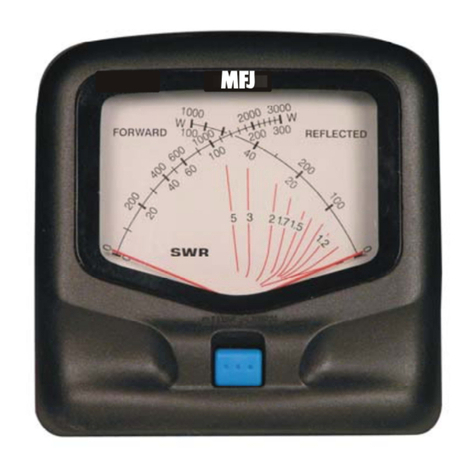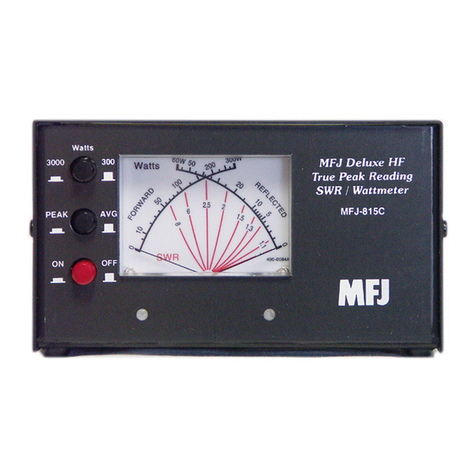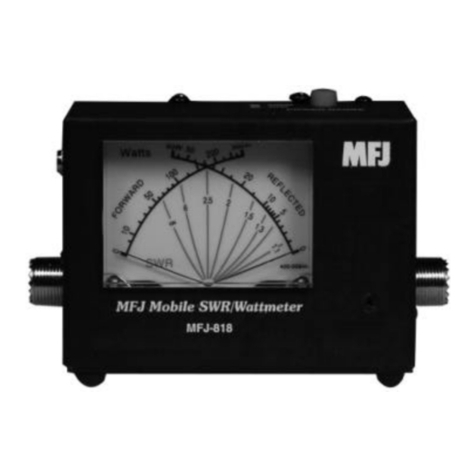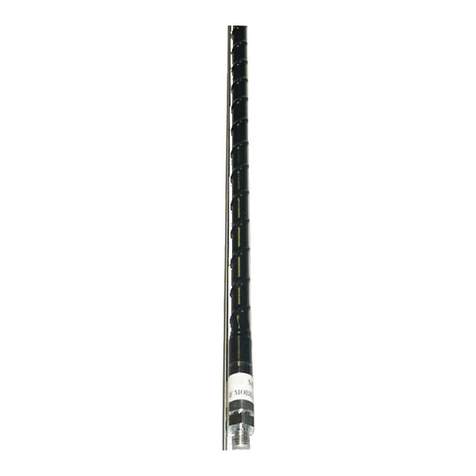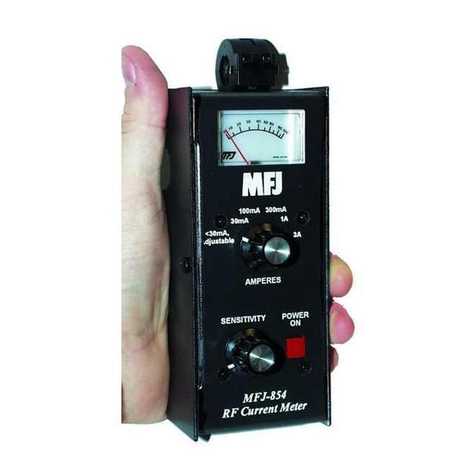
MFJ-224 Instruction Manual 2-Meter FM Analyzer
8
3. Comparing Antenna Performance: The Signal display is useful for comparing two
or more antennas for best performance. In most cases, a local repeater may be used as a
signal source. These results can be extremely accurate, but only if steps are taken to
prevent error. Here is a list of tips for getting good results:
[ ] Position each antenna at the same exact location and height (one at a time).
[ ] Mount antennas at least 15 feet above ground--away from other objects or feedlines.
[ ] Find a spot where the signal is stable, avoiding nulls or multipath-prone locations.
[ ] Watch for minor signal-level drifting (1-2 dB) due to propagation enhancements.
[ ] Use identical coax feeds and the same type of mast for each antenna under test.
[ ] Fully decouple each antenna from its feedline to prevent stray pickup.
[ ] Change antennas quickly, and keep other test antennas out of the way.
[ ] Repeat tests to confirm that your data will hold up under repetitive trials.
If you use a locally-generated signal source, place it--at minimum--several wavelengths
down-range (out of the antenna's near field). Also, use the same antenna height and
polarization as the antenna under test.
4. Yagi Performance: The Signal function can tell you a great deal about the
performance of directional antennas such as quads and yagis. To test these, you'll need a
compass rose at the base of your mast--or a rotator with a control box--so you can
document degrees of rotation off-axis from the signal source. The primary specifications
for directional antennas are:
Forward Gain (dBd): How much advantage does your directional antenna provide
over a 1/2-wave dipole? To find out, use the comparison techniques outlined above.
The directional antenna should be pointed at the source, and the dipole aligned
broadside. Your reference dipole should be properly matched and fully decoupled
from its feedline by a balun or by ferrite beads. Note that gain figures will change
with frequency.
Beamwidth: How broad is your antenna pattern? To find out, aim it at the signal
source and rotate until the RSSI meter drops by 3 dB (the antenna's half-power point).
Now, rotate the opposite way--through the peak--until it again drops by 3 dB. The
degrees of rotation between -3 dB points is called the beamwidth. Generally, wide-
beamwidth antennas have less gain and narrow-beamwidth antennas have more gain.
Front-to-Back Ratio: How well does your antenna reject signals off its back side?
To measure front-to-back ratio, first point your antenna at the signal source and
record the RSSI reading. Then, swing the antenna 180-degrees and record the back
reading. The difference in dBm is the front-to-back ratio in dB. These days, the term
"Front-To-Rear" ratio is also commonly used. This represents an average of several
back-readings taken over a span of 30 degrees. Many designers feel that Front-To-
Rear Ratio provides a more accurate picture of the antenna's true performance.













